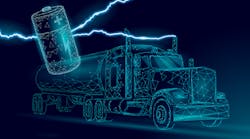Heavy-Duty Off-Road Apps Hold Key to BEV Success
A disruption in the automotive industry has prompted automakers to streamline commercial and consumer transportation by eliminating or reducing the demand for fossil fuels. In this regard, the battery-electric-vehicle (BEV) industry has stepped up to the concerted efforts of governments and NGOs to reduce CO2 emissions.
From low-power vehicles and unreliable charging to high-performance and convenient transport solutions, electric vehicles have taken considerable strides in techno-commercial development and innovation in battery technology.
With no potential alternative to BEVs, automakers have upped their investments in sophisticated technology and robust initiatives to propel consumer reach. Mobility has become one of the most holistic approaches as decarbonization of the automotive landscape using electric vehicles becomes a viable and efficient solution.
BEVs have emerged to surmount climate change as zero-emission vehicles such as EV gain more traction. Battery electric vehicles are replacing the internal combustion engine (ICE)—they don’t have fuel tanks, conventional engines, onboard electricity generation provisions, and tailpipes. Doing away with tailpipe has made the BEV a potential and viable candidate to achieve CO2 reduction targets.
Li-Ion Batteries
An upsurge in BEVs is largely due to the lithium-ion battery, which has higher energy density and better durability than lead-acid batteries. R&D has pushed Li-ions from around 100 Wh/kg a decade ago to 250 to 300 Wh/kg today. Current trends suggest a notable rise in battery capacity—BEVs are touted to reach an average driving range of 350 to 400 km in line with battery sizes of 70 to 80 kWh by 2030.
Seizing the opportunities will be Li-ion batteries for vehicles underpinned by favorable government policies. Of late, there’s been a notable shift toward using lithium-ion batteries that provide increased density and longer cycle life, thereby offering same energy storage at lower weight.
Lithium-ion batteries are in high demand for BEVs because they can output high energy and power by unit of battery mass, enabling them to be lightweight and smaller. Such features have made them the go-to battery in consumer electronics, including laptops, cell phones, portable game/audio players, and video and digital cameras.
Beyond their power density, Li-ion batteries are used extensively in the EV industry due to their ease of charging, safety, charging speed, longevity, and maintenance.
On another note, recycling has become a major issue as metals such as lithium, nickel, and cobalt are essential to producing lithium-ion batteries. Since the metals are distributed around the world, BEV manufacturers are wary of supply-chain disruption as well as their mining due to environmental concerns.
Compelling Avenues in Heavy-Duty Vehicles
Due to their fuel consumption and emissions, heavy-duty vehicles and the notable rise in truck freight movement are receiving scrutiny and perhaps a key element in the roadmap to minimization of emissions. These vehicles have found on-road applications in buses, package delivery, and freight.
Heavy-duty off-road applications, including cargo-handling equipment, are being developed at seaports. Buses have become a major market in BEVs—according to a 2017 report from the American Public Transit Association, 538 out of 9,821 electrified buses were BEVs in U.S. transit fleets.
Vehicle manufacturers have set sizable targets to electrify buses and cars as battery manufacturers witness a paradigm shift, such as major investments to boost production. Stakeholders, including charging hardware manufacturers, charging point operators, and utilities have upped investments in charging infrastructure.
With smaller batteries and lower driving ranges, BEVs hold an edge over fuel-cell electric vehicles (FCEVs). For instance, more Japanese OEMs are adopting battery-electric technology and doing away with hydrogen fuel cells.
The Shifting Landscape
The who’s who of the automotive industry have made their way into the BEV arena. For instance, General Motors Co. and Nikola Corp. announced a strategic partnership in which the former will reportedly engineer and manufacture Nikola Badger BEVs and FCEVs. With the shift toward battery electric vehicles, economic forecasts are strong for BEV manufacturers.
Building a competitive moat in battery electric-vehicle landscape, prominent companies are likely to up the game in terms of business strategies. For instance, Tesla revealed plans to reduce electric battery costs and build a $25,000 battery electric vehicle within three years.
Forward-looking companies are looking to move away from costly cobalt and turn to nickel and iron formulations. Novel production methods, such as the use of dry powders rather than liquid slurries, will likely come to the forefront in the next five years or so.
Overall, the outlook will largely depend on the reduction of the size of battery plants and minimizing production steps. And the automotive industry faces the unique challenge of ramping up BEV charging points.
Sunil Kumar Jha is a Content Writer for Global Market Insights Inc.
